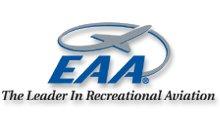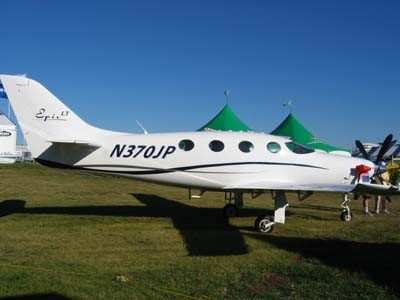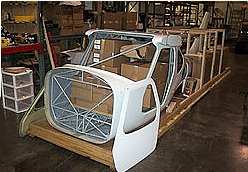Group Urges Members To Get Involved
 With slightly more than a month
remaining in an official public-comment period, EAA President Tom
Poberezny encouraged members and other concerned pilots to express
their views to FAA policymakers in Washington. The comment period
pertains to FAA proposals regarding the agency’s
interpretation and enforcement of the "51% Rule," the requirement
that amateur builders personally perform at least 51 percent of the
tasks in constructing their aircraft.
With slightly more than a month
remaining in an official public-comment period, EAA President Tom
Poberezny encouraged members and other concerned pilots to express
their views to FAA policymakers in Washington. The comment period
pertains to FAA proposals regarding the agency’s
interpretation and enforcement of the "51% Rule," the requirement
that amateur builders personally perform at least 51 percent of the
tasks in constructing their aircraft.
The FAA issued its policy proposals on July 15,
after investigating and discussing concerns for more than
two years. The agency contends some modern-day
practices involving prefabrication and pre-assembly of aircraft kit
components, and other practices involving the use of commercial
builder assistance, leave too few construction tasks to the amateur
builder.
"Unfortunately, in attempting to address these concerns, the FAA
is proposing an approach that would overcomplicate builders'
attempts to comply with, and the FAA's attempts to enforce, the 51%
Rule," Poberezny said. "Our primary message to the FAA is, 'Keep it
simple.'"
The FAA’s proposal would require amateur builders to
document not only that they performed a majority of the overall
construction tasks but also that they executed a required
proportion of tasks within two broad categories: assembly and
fabrication.

According to the FAA’s proposal...
- at least 20% of total construction tasks must be fabrication
done by the amateur;
- at least another 20% of total construction tasks must be
assembly done by the amateur; and
- another 11% or more of the total construction tasks must be
work within either category done by the amateur, to ensure a total
contribution to the construction project of at least 51%.
 An EAA draft response asserts
the FAA's interpretation overreaches the language and intent of the
original amateur-building regulations, which do not specify
percentages of tasks according to definitions of fabrication or
assembly. It further asserts the regulations' vague definitions of
these construction-task categories would make differentiating
between them difficult.
An EAA draft response asserts
the FAA's interpretation overreaches the language and intent of the
original amateur-building regulations, which do not specify
percentages of tasks according to definitions of fabrication or
assembly. It further asserts the regulations' vague definitions of
these construction-task categories would make differentiating
between them difficult.
EAA encourages the FAA simply to focus on the isolated cases of
some individuals -- whether kit manufacturers, professional
aircraft-construction service providers, or their customers --
whose practices might circumvent the 51% Rule: "As EAA members and
builders have stated, the FAA needs to enforce the current
regulations, not create a new regulation through policy."
Poberezny encourages homebuilders to comment before the
September 30 deadline.
"The EAA community has been deeply involved in the examination
of this issue, a process that included having an EAA representative
serve as co-chair of the committee that the FAA chartered to
investigate and provide recommendations. From the beginning, we've
supported the 51% requirement and have discouraged the limited
cases of sidestepping," Poberezny said.
"As a result of our commitment to this process, we’ve
ensured some important safeguards for amateur-building activity.
Learn more about these safeguards. Now, however, the EAA community
must rally again to defend the amateur-building movement.
Homebuilding activities provide enormous recreational and
educational benefits to participants. And over the years
they’ve spawned numerous innovations in construction,
techniques, and technologies from which all of aviation has
benefitted," Poberezny said.
The FAA may publish final policy as early as the end of this
year. Following this, EAA says it will publish a thorough analysis
of implications and ramifications for amateur-building
participants.
 NTSB Final Report: Cozy Cub
NTSB Final Report: Cozy Cub ANN FAQ: Contributing To Aero-TV
ANN FAQ: Contributing To Aero-TV Classic Aero-TV: Seated On The Edge Of Forever -- A PPC's Bird's Eye View
Classic Aero-TV: Seated On The Edge Of Forever -- A PPC's Bird's Eye View ANN's Daily Aero-Linx (04.29.25)
ANN's Daily Aero-Linx (04.29.25) ANN's Daily Aero-Term (04.29.25): Execute Missed Approach
ANN's Daily Aero-Term (04.29.25): Execute Missed Approach





